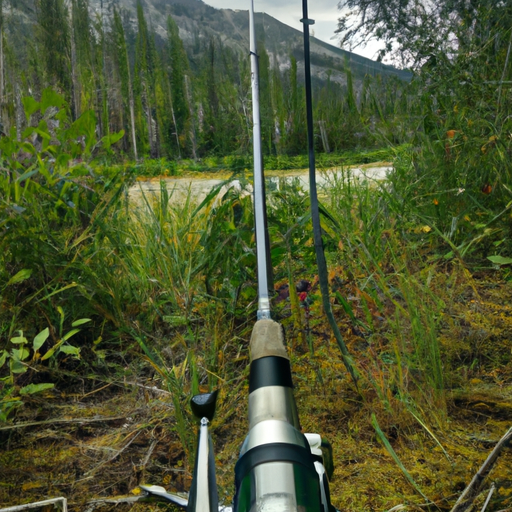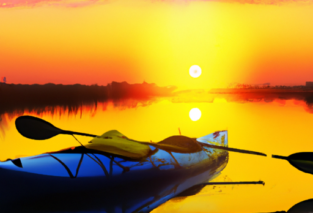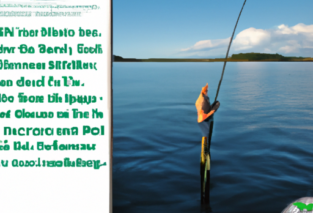Are you a rookie fisherman looking to find the best fishing locations? Well, look no further! We’ve got just the tips you need to help you choose the perfect spot to cast your line. Whether you’re a beginner or just looking for some insider knowledge, our expert tips will guide you towards the best fishing locations that are sure to provide you with a great catch. From understanding different types of water bodies to researching local fishing regulations, we’ve got you covered. So grab your gear and get ready to reel in some excitement with our helpful tips for choosing the best fishing locations for rookies!
Researching the Best Fishing Locations
When it comes to finding the best fishing locations, research is key. By taking the time to explore various resources, you can gather valuable information that will help you make informed decisions about where to cast your line. Here are some tips to get you started:
Check out local fishing forums
Local fishing forums are a goldmine of information for anglers of all levels of experience. These online communities are filled with fellow fishermen who are more than willing to share their knowledge and experiences. By joining these forums, you can ask questions, read about others’ fishing trips, and even find recommendations for the best fishing spots in your area.
Utilize online fishing resources
The internet is a treasure trove of information when it comes to fishing. There are countless websites dedicated to providing anglers with tips, tricks, and advice on finding the best fishing locations. Take advantage of these resources by browsing through articles, watching videos, and even participating in online fishing communities. The more you learn, the better equipped you’ll be to find the perfect fishing spot.
Read fishing reports
Fishing reports are another valuable resource when it comes to researching fishing locations. These reports provide detailed information about recent fishing activity, such as the types of fish caught, the techniques used, and the success rates. By reading fishing reports, you can gain insight into the current conditions and trends in different areas, helping you narrow down your options and increase your chances of a successful fishing trip.
Talk to experienced anglers
There’s no substitute for firsthand knowledge, so don’t be afraid to reach out to experienced anglers for advice. Whether it’s a friend, family member, or even a local fishing guide, talking to someone who knows the area well can provide you with valuable insights and recommendations. They can offer tips on the best times to fish, the most productive techniques to use, and the most promising fishing locations in your area.
Consider hiring a fishing guide
If you’re new to fishing or simply want an expert’s guidance, hiring a fishing guide is a fantastic option. These professionals have an intimate knowledge of local fishing spots and can help you navigate unfamiliar waters with ease. A fishing guide can provide valuable insights, teach you new techniques, and increase your chances of a successful fishing trip. Plus, they often supply all the necessary equipment, making it a hassle-free option for beginners.
Understanding Different Types of Fishing Locations
To find the best fishing locations, it’s essential to understand the different types of fishing spots available to you. Here are some categories to consider:
Freshwater fishing spots
Freshwater fishing spots include lakes, ponds, rivers, and streams that are not connected to the ocean. These locations are home to a wide variety of fish species, including bass, trout, catfish, and panfish. Freshwater fishing can offer a peaceful and serene experience, surrounded by nature and beautiful landscapes. Some popular freshwater fishing spots include famous lakes like Lake Tahoe in California or Lake Michigan in the United States.
Saltwater fishing spots
Saltwater fishing spots include oceans, seas, bays, and estuaries. These locations are known for their diverse marine life, including fish species like tuna, snapper, marlin, and salmon. Saltwater fishing can provide an exhilarating experience, with the thrill of battling larger and more powerful fish. Popular saltwater fishing destinations include the Florida Keys, the Great Barrier Reef in Australia, and the picturesque coastlines of Hawaii.
Pond and lake fishing spots
Ponds and lakes are popular fishing spots for beginners and experienced anglers alike. Their calm waters and abundant fish populations make them ideal for a relaxing day of fishing. Ponds and lakes can be found in both urban and rural areas, offering convenience and accessibility. Many parks and recreational areas feature well-stocked fishing ponds and lakes, making them perfect for family outings or solo adventures.
River and stream fishing spots
Rivers and streams are dynamic fishing locations that offer a unique angling experience. The flowing water and varying depths create ideal habitats for a wide range of fish species. Whether you’re targeting trout in a cold mountain stream or searching for bass in a lazy river, fishing in rivers and streams provides an exciting challenge. These locations often require specific techniques and gear, so make sure to do your research beforehand.
Shoreline fishing spots
Shoreline fishing allows anglers to cast their lines from the shore, making it accessible to almost everyone. Whether it’s fishing from a sandy beach, rocky shoreline, or grassy bank, shoreline fishing can be a productive and enjoyable experience. This type of fishing is particularly popular for surf fishing, where anglers cast their lines into the crashing waves in search of species like striped bass, redfish, and surfperch. Shoreline fishing spots can be found along coastlines, lakeshores, and even riversides.
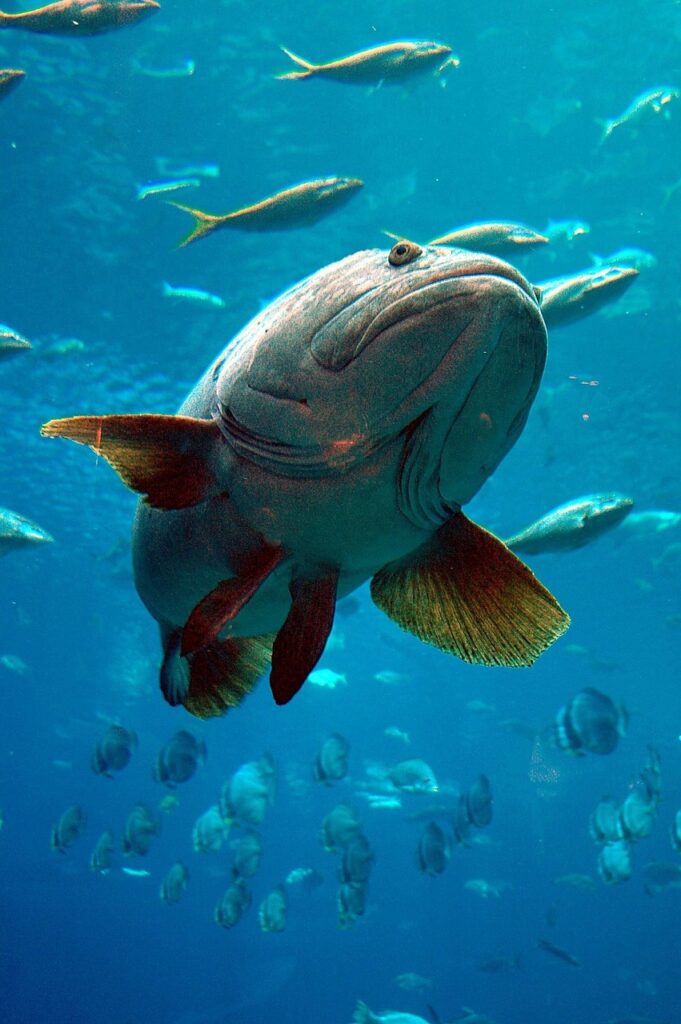
Considering Fishing Regulations and Licensing
Before heading out on a fishing trip, it’s crucial to familiarize yourself with the fishing regulations and licensing requirements in your area. Here are some aspects to consider:
Check the fishing regulations
Fishing regulations vary from one location to another, so it’s essential to know and follow the rules. Regulations may include catch limits, size restrictions, protected species, and the use of specific gear or bait. These regulations are in place to ensure the sustainability of fish populations and protect the environment. Check with your local fish and wildlife department or visit their website to stay updated on the latest fishing regulations in your area.
Obtain required fishing licenses
In most places, anglers are required to have a fishing license to legally fish. Fishing licenses help fund conservation efforts and support fishery management. They are typically available for purchase online, at sporting goods stores, or at designated licensing offices. Make sure to obtain the appropriate fishing license for your age, residency status, and the type of fishing you plan to do. Remember to carry your license with you while fishing, as authorities may ask for it at any time.
Understand catch and release policies
Catch and release is a practice that involves releasing a fish back into the water after it has been caught, rather than keeping it. This practice helps preserve fish populations and ensures the sustainability of the resource. However, it’s crucial to understand the specific catch and release policies in your area. Some fish may have size or species restrictions for catch and release, while others may require the use of barbless hooks or specific handling techniques to minimize harm to the fish.
Be aware of fishing seasons and limits
Fish populations can vary throughout the year due to spawning seasons, migrations, and other factors. Understanding the fishing seasons and limits for different fish species can greatly affect your chances of success. Some fish may be more active and easier to catch during specific times of the year, while others may have closed seasons to protect breeding populations. Take the time to research the fishing seasons and limits for your target species, and plan your fishing trips accordingly.
Assessing Fish Species and Targets
Knowing the fish species you’re likely to encounter in a fishing location is essential for planning a successful trip. Here are some factors to consider:
Identify local fish species
Different fishing locations can be home to a wide variety of fish species. Researching and identifying the local fish species will help you understand what to expect and tailor your fishing techniques accordingly. Learn about the feeding habits, preferred habitats, and behaviors of the fish species in your area. This knowledge will give you a better chance of enticing the fish to bite and increase your chances of a successful catch.
Determine target fish species
Deciding on your target fish species is crucial when choosing a fishing location. Consider the type of fish you want to catch, the size you’re aiming for, and the challenge you’re seeking. Some anglers enjoy the thrill of chasing trophy-sized fish, while others prefer the simplicity and relaxation of catching smaller species. Knowing your target species will help you select a fishing location that offers the best chance of hooking your desired fish.
Consider the desired fishing experience
Every angler has their own preferences when it comes to the fishing experience they seek. Some enjoy the solitude of backcountry fishing, while others prefer the camaraderie of fishing with friends at a popular spot. Consider what type of fishing experience you’re looking for. Do you want a serene and peaceful environment, or do you prefer the hustle and bustle of a busy fishing pier? Understanding your desired fishing experience will help guide you towards the best fishing locations to meet your expectations.
Research popular fish species for beginners
If you’re new to fishing, it’s wise to start with fish species that are known to be beginner-friendly. These fish are typically more abundant, easier to catch, and forgiving of mistakes. Popular fish species for beginners include panfish like bluegill and sunfish, as well as species like trout and catfish. These fish often inhabit easily accessible and well-stocked fishing spots, making them perfect for beginners looking to gain confidence and build their skills.
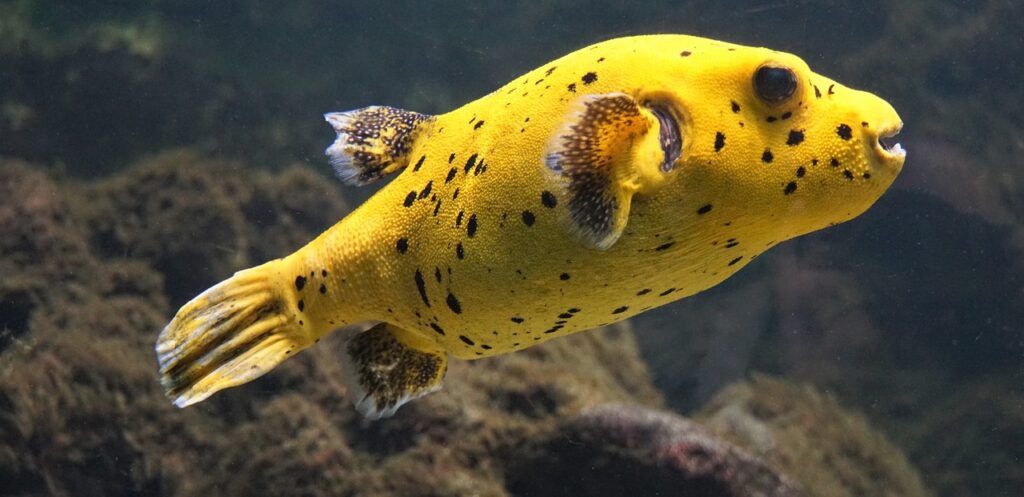
Examining Accessibility and Safety
When choosing a fishing location, it’s important to consider accessibility and safety factors. Here are some aspects to evaluate:
Evaluate transportation options
Consider how you plan to reach your chosen fishing location. Will you be driving or relying on public transportation? Evaluate the accessibility and distance of the fishing spot from your home or lodging. Some fishing spots may require off-road travel or hiking, while others may have convenient parking near the shoreline. Plan your transportation accordingly to ensure a smooth and stress-free fishing trip.
Consider ease of access to fishing locations
Accessibility is an important factor, especially for anglers with mobility challenges or those fishing with young children. Look for fishing locations with easily accessible entry points, paved or well-maintained paths, and accommodations for individuals with disabilities. Many parks and recreational areas provide fishing piers or platforms specifically designed for easy access. Additionally, consider the distance you’ll need to walk or hike to reach your fishing spot, and make sure it’s suitable for your physical abilities.
Assess parking availability
Parking availability can significantly impact your overall fishing experience. Check if the fishing location has designated parking areas or if parking is available nearby. Some popular fishing spots may have limited parking, especially during peak seasons, which could cause inconvenience or require you to arrive early to secure a parking spot. Assessing parking availability will help you plan accordingly and ensure a smooth start to your fishing adventure.
Ensure adequate safety measures
Safety should be a top priority when planning a fishing trip. Before heading out, ensure you have the necessary safety equipment, such as life jackets or personal flotation devices, especially if you’ll be fishing from a boat or near deep water. Familiarize yourself with the local safety regulations and guidelines for the fishing location, including any requirements for wearing reflective clothing or using navigational lights. It’s also a good idea to inform someone of your fishing plans and estimated return time for added safety.
Research and be prepared for potential hazards
Every fishing location has its unique set of potential hazards, such as slippery rocks, treacherous currents, or sharp underwater obstacles. Research the specific hazards associated with your chosen fishing spot and take appropriate precautions. This may include wearing proper footwear with good traction, using sunscreen to protect against sunburn, or carrying a first aid kit in case of minor injuries. Being prepared and knowledgeable about potential hazards will keep you safe and allow you to fully enjoy your fishing experience.
Checking Weather and Environmental Factors
Weather and environmental factors can greatly influence the success and safety of your fishing trip. Here’s what you should consider:
Monitor weather conditions
Before embarking on a fishing trip, check the weather forecast for your chosen location. Pay attention to factors such as wind direction and speed, temperature fluctuations, and the likelihood of precipitation. Inclement weather can not only impact your comfort but also affect fish behavior and feeding patterns. It’s crucial to stay informed and make any necessary adjustments to your fishing plans based on the weather conditions.
Consider seasonal patterns
Seasonal patterns play a significant role in fishing success. Different fish species exhibit varying behavior and migratory patterns throughout the year. Research and understand the seasonal patterns for your target fish species. Some fish, such as salmon, have specific times of the year when they swim upstream to spawn, while others may be more active and aggressive during certain seasons. By aligning your fishing trips with the seasonal patterns, you can maximize your chances of landing a catch.
Evaluate water quality
Water quality is an important factor to consider when choosing a fishing location. Clean and clear water is generally more conducive to fish populations and supports a healthier ecosystem. Factors such as pollution, pesticide runoff, or algae blooms can negatively impact water quality and reduce fish populations. Research the water quality of your chosen fishing spot, and be cautious if there are indications of poor conditions that could affect the health and safety of both the fish and yourself.
Assess the impact of pollution or algae blooms
Unfortunately, some fishing locations may be affected by pollution or harmful algae blooms. These conditions can have a significant impact on fish populations and make the water unsafe for human consumption or contact. Check for any advisories or warnings related to pollution or algae blooms in your chosen fishing spot. It’s essential to prioritize your health and the health of the environment by avoiding locations affected by these issues.
Be mindful of environmental regulations
Protecting and preserving our natural resources is a responsibility that falls on all anglers. Familiarize yourself with any environmental regulations that may apply to your chosen fishing location, such as catch limits, restricted areas, or guidelines for fish handling and release. Following these regulations ensures the sustainability of fish populations and helps maintain the overall health of the ecosystem. Take pride in being an ethical angler and set a positive example for others by respecting and adhering to environmental regulations.

Finding Fishing Locations with Beginner-Friendly Facilities
For beginners, fishing locations with beginner-friendly facilities can greatly enhance the fishing experience. Consider the following factors:
Look for fishing piers and platforms
Fishing piers and platforms are excellent options for beginners, as they provide easy access and increased safety. These elevated structures extend over bodies of water, allowing anglers to cast their lines without needing to wade or navigate uneven terrain. Fishing piers often have amenities such as benches, rod holders, and ample space for multiple anglers, making them ideal for novice fishermen. Some locations even have fishing piers specifically designed for children, ensuring a fun and safe fishing experience for the whole family.
Find locations with accessible amenities
When choosing a fishing location, consider the availability of amenities that can make your fishing trip more comfortable and enjoyable. Look for locations that provide amenities such as picnic areas, shade structures, and fishing cleaning stations. These amenities can enhance your overall experience, providing a place to relax, enjoy a meal, or clean your catch. Being able to access these amenities makes for a more convenient and memorable fishing trip.
Consider the presence of restrooms
While it may seem like a minor detail, the availability of restroom facilities can greatly impact your fishing experience, especially if you’re planning to spend an extended period at the fishing location. Check if the fishing spot has restrooms nearby, whether they are permanent structures or portable facilities. Having access to clean and well-maintained restrooms can add to your comfort and convenience while enjoying a day of fishing.
Research nearby accommodations and services
If you’re planning a fishing trip that extends beyond a single day, it’s essential to consider nearby accommodations and services. Look for lodging options such as cabins, campsites, or hotels in proximity to the fishing location. This allows you to maximize your time on the water and ensure a relaxing and convenient stay. Additionally, research nearby bait and tackle shops, grocery stores, and restaurants to fulfill any equipment or supply needs during your fishing trip.
Check for fishing equipment rentals
For beginners who may not have their own fishing equipment, finding fishing locations that offer equipment rentals can be a game-changer. Renting fishing gear allows you to try out the sport before investing in expensive equipment. Look for fishing locations that have on-site equipment rentals or nearby tackle shops that provide rental services. Be sure to inquire about the types of gear available and any additional fees or requirements for renting.
Using Technology and Fishing Apps
Technology has revolutionized the way anglers research, plan, and execute their fishing trips. Here are some ways you can leverage technology to enhance your fishing experience:
Explore fishing apps and websites
Fishing apps and websites offer a wealth of information and resources that can greatly benefit anglers. These platforms often provide features such as fishing forecasts, interactive maps, and real-time fishing reports. Some apps even allow you to log your catches and track your personal fishing statistics. Take the time to explore and discover fishing apps and websites that align with your specific needs and preferences. They can be valuable tools for finding the best fishing locations, learning new techniques, and staying informed about weather conditions and fishing trends.
Utilize GPS and navigation tools
GPS and navigation tools are essential for anglers who want to navigate unfamiliar waters with confidence. Whether you’re fishing from a boat or exploring on foot, having a reliable GPS device or mobile app can help you locate fishing hotspots, track your route, and ensure you don’t get lost. These tools can provide real-time information about your position, speed, and distance traveled, making it easier to reach your chosen fishing location and navigate back safely.
Research fish finders and sonar devices
Fish finders and sonar devices are invaluable tools for locating fish and understanding the underwater terrain. These devices use sonar technology to detect and display underwater objects, including fish, structure, and the depth of the water. By investing in a fish finder or sonar device, you can dramatically improve your chances of finding fish and increase your overall fishing success. Do some research to find a device that suits your needs and budget, and learn how to interpret the information it provides for the best results.
Consider using weather and tide apps
Weather and tide apps are excellent resources for anglers who want to stay one step ahead of changing conditions. These apps provide forecasts, real-time weather updates, and tide information – all crucial factors in planning a successful fishing trip. By monitoring weather patterns and tidal movements, you can determine the most favorable times and conditions for fishing. Whether you’re concerned about wind direction, barometric pressure, or tidal currents, weather and tide apps can provide the insights you need to make informed decisions while on the water.
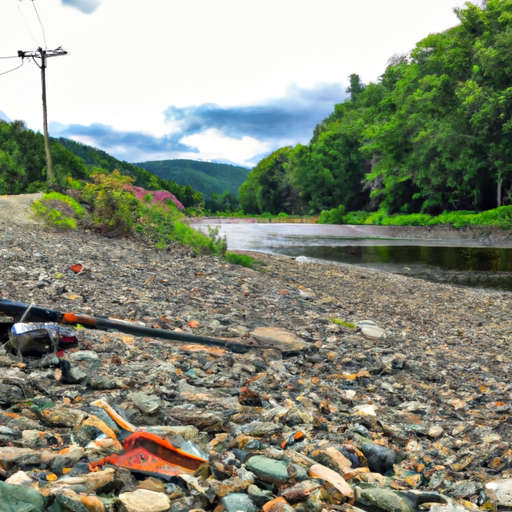
Considering Local Knowledge and Reports
Local knowledge and reports can be invaluable when it comes to finding the best fishing locations. Here’s how you can tap into the expertise of others:
Join local fishing communities
One of the best ways to tap into local knowledge is by joining fishing communities in your area. These communities may be online forums, social media groups, or local fishing clubs. Engage with fellow anglers, ask questions, and share your own experiences. By connecting with local fishermen, you can gain valuable insights into the best fishing spots, techniques, and conditions in your area. Local fishing communities are often filled with passionate and knowledgeable individuals who are more than willing to help fellow anglers succeed.
Follow social media accounts of local fishermen
Social media platforms are an excellent source of information and inspiration for anglers. Consider following the social media accounts of local fishermen or fishing-related organizations in your area. These accounts often provide updates on recent fishing activity, share fishing tips and tricks, and even offer giveaways or contests. By staying connected, you can stay informed about the latest fishing trends, discover hidden gems for fishing locations, and engage with a broader community of anglers.
Attend fishing tournaments or events
Fishing tournaments and events offer a unique opportunity to learn from experienced anglers and connect with fishing enthusiasts in your area. These events often attract skilled fishermen who are passionate about their sport and willing to share their knowledge. Attend local fishing tournaments, expos, or seminars to broaden your understanding of fishing techniques and gain insights into the best fishing spots. You may even have the chance to network with professional anglers who can provide valuable advice and recommendations.
Ask for recommendations from bait and tackle shops
Bait and tackle shops are not only great places to gear up for your fishing trips but also valuable resources for local knowledge. The staff at these shops are often experienced anglers themselves and can provide advice on the best fishing locations, techniques, and bait choices based on current conditions. Strike up a conversation with the shop employees, ask for recommendations or tips, and take advantage of their expertise. They can guide you towards the most productive fishing locations in your area and help you make the most of your fishing adventure.
Being Open to Exploring and Trying New Locations
While it’s tempting to stick to familiar or popular fishing spots, being open to exploring and trying new locations can lead to exciting discoveries and memorable fishing experiences. Here’s why you should venture beyond your comfort zone:
Don’t limit yourself to popular spots
Popular fishing spots often attract a large number of anglers, especially during peak seasons. While these spots may offer excellent fishing opportunities, they can also be crowded and competitive. Don’t be afraid to venture away from these popular spots and find your own hidden gems. Expanding your horizons and exploring lesser-known or off-the-beaten-path locations can reward you with more solitude, unique fishing experiences, and the opportunity to discover untapped fishing potential.
Explore lesser-known fishing locations
Some of the best fishing locations are off the radar of most anglers. Look for lesser-known fishing spots that may not be as well-publicized or frequented. These hidden gems can offer excellent fishing opportunities without the crowds. Explore local maps, ask fellow anglers, or do some online research to discover these hidden treasures. By venturing into lesser-known fishing locations, you may uncover secret fishing holes and enjoy the thrill of discovering untapped fishing potential.
Try fishing in different seasons
Don’t restrict your fishing adventures to a single season. Trying fishing in different seasons can provide a unique perspective and open up new opportunities. Fish behavior and feeding patterns can change throughout the year, offering distinct challenges and rewards. Experiment with fishing during different seasons to understand how fish populations fluctuate, the techniques that work best, and the variety of species you can target. Each season brings its own set of fishing experiences and memories waiting to be made.
Experiment with different fishing techniques
Fishing is a versatile sport with a variety of techniques to be explored. Don’t limit yourself to a single fishing technique or style. Experiment with different fishing methods, such as baitcasting, fly fishing, or trolling, to expand your knowledge and skills. Each technique offers its own set of challenges and rewards, and trying different methods can make your fishing trips more exciting and enjoyable. Embrace the opportunity to learn and grow as an angler by stepping out of your comfort zone and embracing new fishing techniques.
In conclusion, researching the best fishing locations involves a combination of factors such as local knowledge, environmental conditions, accessibility, safety, and personal preferences. By utilizing resources such as fishing forums, online tools, fishing reports, and local expertise, you can gather the information needed to make informed decisions about where to fish. Understanding different types of fishing locations, considering fishing regulations, assessing fish species, and evaluating accessibility, weather, and facilities all contribute to finding the perfect fishing spot. Additionally, leveraging technology through fishing apps, GPS devices, and weather applications can enhance your fishing experience. Lastly, being open to exploring new locations and trying different techniques allows you to expand your skills and discover hidden gems in the fishing world. So, get out there, do your research, and embark on exciting fishing adventures that will create lasting memories. Happy fishing!
